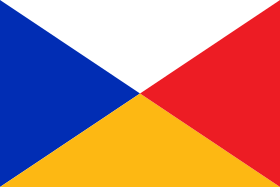La Peninsular and Oriental Steam Navigation Company, plus connue sous les lettres P&O, est une compagnie de transport maritime, de croisière et de logistique britannique fondée à Londres en 1837 par deux hommes d'affaires et politiciens britanniques Brodie McGhie Willcox et Arthur Anderson et le capitaine Richard Bourne. Elle a été la plus ancienne compagnie de croisières et une des grandes compagnies maritimes de paquebots depuis sa fondation au XIXe siècle, opérant en particulier en Méditerranée, sur la Route des Indes, de l'Extrême-Orient et de l'Australie. Dominant le transport maritime sur les routes orientales, elle a joué un rôle majeur dans l'émigration européenne en Australie au XIXe siècle et XXe siècle. Elle a également été une pionnière du marché des croisières dans lequel elle continue d'opérer depuis son absorption au sein du groupe Carnival Group, leader mondial du secteur. The Peninsular and Oriental Steam Navigation Company, better known as P&O, is a British shipping, cruise and logistics company founded in London in 1837 by two British businessmen and politicians Brodie McGhie Willcox and Arthur Anderson and the Captain Richard Bourne. It has been the oldest cruise line and one of the major ocean liner shipping companies since its founding in the 19th century, operating particularly in the Mediterranean, on the Route to the Indies, the Far East and Australia. Dominating shipping on the eastern routes, it played a major role in European emigration to Australia in the 19th and 20th centuries. It was also a pioneer in the cruise market in which it continues to operate since its absorption into the Carnival Group, world leader in the sector. Lire son histoire en cliquant sur ce lien / Read his story by clicking on that link: P & O Orient Lines Wikipédia
R.M.S. Strathmore RMS Strathmore était un paquebot et Royal Mail Ship de la Peninsular and Oriental Steam Navigation Company (P & O), le troisième des cinq navires jumeaux construit pour P & O dans la classe "Strath". Lancée en 1935, elle a servi sur l'itinéraire de la compagnie de Londres à l'Inde jusqu'en 1940, date à laquelle elle a été réquisitionnée pour servir de vaisseau de guerre et a été rebaptisée SS Strathmore, avant d'être rendue à ses propriétaires en 1948. Après une longue période , elle a repris le service avec P & O de 1949 jusqu'en 1963, quand elle a été vendue à Latsis Lines et rebaptisée Marianna Latsi, puis Henrietta Latsi, avant d'être désarmée en 1967 et finalement abandonnée en 1969. RMS Strathmore was a passenger liner and Royal Mail Ship of the Peninsular and Oriental Steam Navigation Company (P&O), the third of five sister ships built for P&O in the "Strath" class. Launched in 1935, she served on the company's route from London to India until 1940, when she was requisitioned for use as a warship and was renamed the SS Strathmore, before being returned to her owners in 1948. After a long period she returned to service with P&O from 1949 until 1963, when she was sold to Latsis Lines and renamed Marianna Latsi, then Henrietta Latsi, before being decommissioned in 1967 and finally abandoned in 1969. Lire son histoire en cliquant sur ce lien / Read his story by clicking on that link: R.M.S. Strathmore Wikipédia
R.M.S. Strathaird RMS Strathaird, plus tard TSS Strathaird, était un paquebot de la Peninsular and Oriental Steam Navigation Company (P & O). Elle était la deuxième des cinq navires jumeaux dans ce que l'on a appelé la classe "Strath". Tous les anciens navires P & O avaient des coques et des entonnoirs peints en noir, mais Strathaird et ses sœurs étaient peintes avec des coques blanches et des entonnoirs chamois, ce qui leur valu le surnom de «The Beautiful White Sisters» ou simplement «The White Sisters». Strathaird et son navire jumeau RMS Strathnaver étaient des Royal Mail Ships qui travaillaient sur la ligne régulière de P & O entre Tilbury dans l'Essex en Angleterre et Brisbane dans le Queensland en Australie. En 1935, ils ont été rejoints par le troisième navire de la classe, RMS Strathmore. Strathaird est resté en service pendant près de 30 ans et a été mis au rebut en 1961. RMS Strathaird, later TSS Strathaird, was an ocean liner of the Peninsular and Oriental Steam Navigation Company (P&O). She was the second of five sister ships in what became known as the "Strath" class. All early P&O ships had hulls and funnels painted black, but Strathaird and her sisters were painted with white hulls and buff funnels, earning them the nickname "The Beautiful White Sisters" or simply "The White Sisters. Strathaird and her sister ship RMS Strathnaver were Royal Mail Ships which worked on the regular P&O route between Tilbury in Essex, England and Brisbane in Queensland, Australia. In 1935 they were joined by the third ship of the class, RMS Strathmore. Strathaird remained in service for almost 30 years and was scrapped in 1961. Lire son histoire en cliquant sur ce lien / Read his story by clicking on that link: R.M.S. Strathaird Wikipédia
R.M.S. Strathnaver RMS Strathnaver, plus tard SS Strathnaver, était un paquebot de la Peninsular and Oriental Steam Navigation Company (P & O). Elle était le premier des cinq navires jumeaux dans ce qui s'appelait la classe "Strath". Tous les anciens navires P & O avaient des coques et des entonnoirs peints en noir, mais Strathnaver et ses soeurs étaient peintes avec des coques blanches et des entonnoirs chamois, ce qui leur valu le surnom de «The Beautiful White Sisters» ou juste «The White Sisters». Strathnaver et ses navires jumeaux RMS Strathaird et RMS Strathmore étaient des Royal Mail Ships qui travaillaient sur la ligne régulière de P & O entre Tilbury dans l'Essex en Angleterre et Brisbane dans le Queensland en Australie. RMS Strathnaver, later SS Strathnaver, was an ocean liner of the Peninsular and Oriental Steam Navigation Company (P&O). She was the first of five sister ships in what was called the "Strath" class. All early P&O ships had hulls and funnels painted black, but Strathnaver and her sisters were painted with white hulls and buff funnels, earning them the nickname "The Beautiful White Sisters" or just "The White Sisters. Strathnaver and her sister ships RMS Strathaird and RMS Strathmore were Royal Mail Ships which worked on the regular P&O route between Tilbury in Essex in England and Brisbane in Queensland in Australia. Strathnaver remained in service for just over 30 years and was scrapped in 1962. Lire son histoire en cliquant sur ce lien / Read his story by clicking on that link: R.M.S. Strathnaver Wikipédia
S.S. Orsova SS Orsova, était un paquebot britannique, construit par Vickers Armstrong Shipbuilders Ltd. de Barrow-in-Furness, Angleterre pour Orient Steam Navigation Company (Orient Line) pour ses services Grande-Bretagne-Australie via le canal de Suez. Elle fut le développement final de la classe de 28 000 tonnes qui commença avec les SS Orcades de 1948 et continua avec le SS Oronsay de 1951. En 1960, en conjonction avec l'introduction des nouveaux Oriana et Canberra, les flottes d'Orient ( qui était détenue majoritairement par P & O) et P & O ont été combinés en tant que P & O-Orient Lines, bien que les navires de l'Orient aient conservé leurs coques de couleur de maïs et aient navigué sous leur propre drapeau de maison. En 1966, P & O a acquis le solde des actions Orient et la ligne Orient a été abandonnée, Orsova et ses coéquipiers étant transférés à la Compagnie de navigation à vapeur péninsulaire et orientale (P & O), peinte en blanc et sous le drapeau de P & O. SS Orsova, was a British ocean liner, built by Vickers Armstrong Shipbuilders Ltd. from Barrow-in-Furness, England for Orient Steam Navigation Company (Orient Line) for its Great Britain-Australia services via the Suez Canal. She was the final development of the 28,000 ton class which began with the SS Orcades of 1948 and continued with the SS Oronsay of 1951. In 1960, in conjunction with the introduction of the new Oriana and Canberra, the Orient Fleets ( which was majority owned by P&O) and P&O were combined as P&O Orient Lines, although the Orient ships retained their corn-colored hulls and sailed under their own flag of House. In 1966, P&O acquired the remaining Orient shares and the Orient line was abandoned, with Orsova and his teammates transferring to the white-painted, flag-flying Peninsular and Oriental Steam Navigation Company (P&O). of P&O. Lire son histoire en cliquant sur ce lien / Read his story by clicking on that link: S.S. Orsova Wikipédia
S.S. Orontes Le SS Orontes était un navire à passagers appartenant à Orient Line. Le navire a été construit en 1929 par Vickers Armstrong LTD. à Barrow-in-Furness, Angleterre. Ses navires jumeaux étaient Orama (II), Orford, Oronsay et Otranto (II). Orontes était le dernier de la classe "Orama" et de grands efforts ont été faits pour faire des salles publiques d'Orontes les meilleurs de cette classe. Le nom Orontes appartenait auparavant au RMS Orontes, un navire antérieur appartenant à la ligne Orient. The SS Orontes was a passenger ship owned by Orient Line. The ship was built in 1929 by Vickers Armstrong LTD. in Barrow-in-Furness, England. Her sister ships were Orama (II), Orford, Oronsay and Otranto (II). Orontes was the last of the "Orama" class and great efforts were made to make the public halls of Orontes the best of this class. The name Orontes previously belonged to the RMS Orontes, an earlier ship belonging to the Orient Line. Lire son histoire en cliquant sur ce lien / Read his story by clicking on that link: S.S. Orontes Wikipédia
S.S. Himalaya Le SS Himalaya était un navire à passagers britannique de la société de navigation à vapeur Peninsular and Oriental, lancée en 1948, qui opérait principalement entre la Grande-Bretagne et l'Australie. Elle a été retirée du service en 1974 et mise au rebut l'année suivante. The SS Himalaya was a British passenger ship of the Peninsular and Oriental steamship company, launched in 1948, which operated mainly between Great Britain and Australia. She was withdrawn from service in 1974 and scrapped the following year. Lire son histoire en cliquant sur ce lien / Read his story by clicking on that link: S.S. Himalaya Wikipédia
S.S. Canberra Le SS Canberra est un paquebot de croisière britannique de la Peninsular and Oriental Steam Navigation Company (P&O); construit au chantier Harland and Wolff de Belfast (Irlande du nord), qui a navigué entre 1961 et 1973 en tant que paquebot de ligne sur la route australienne de la compagnie (Southampton - Sydney) puis a servi comme paquebot de croisière au sein de la P&O Cruises jusqu'à sa retraite en 1997. Surnommée la Grande baleine blanche, il est le plus gros paquebot de la compagnie et a été l'un des premiers grands paquebots de luxe à la fin du xxe siècle. Il a été réquisitionné en 1982 par la Royal Navy et a servi durant la Guerre des Malouines contre l'Argentine. The SS Canberra is a British cruise liner of the Peninsular and Oriental Steam Navigation Company (P&O); built at the Harland and Wolff shipyard in Belfast (Northern Ireland), which sailed between 1961 and 1973 as a liner on the company's Australian route (Southampton - Sydney) then served as a cruise liner within the P&O Cruises until its retirement in 1997. Nicknamed the Great White Whale, it is the company's largest liner and was one of the first major luxury liners in the late 20th century. It was requisitioned in 1982 by the Royal Navy and served during the Falklands War against Argentina. Lire son histoire en cliquant sur ce lien / Read his story by clicking on that link: S.S. Canberra Wikipédia
Oriana Oriana est le premier navire de croisière commandé pour P&O Cruises. Construit par Meyer Werft, le navire est entré en service en avril 1995 en tant que premier navire de croisière conçu pour le marché britannique des croisières. Oriana a été construit au chantier naval de Meyer Werft situé à Papenburg, en Allemagne. Il a été lancé en juin 1994. Le navire de croisière a commencé son voyage inaugural depuis Southampton le 9 avril 1995. Oriana a subi une rénovation de 12 millions de livres sterling en décembre 2006. Le navire a été modernisé avec le nouveau restaurant Oriana Rhodes. Le bar Lord’s Tavern a été agrandi. Les cabines ont été relookées avec de nouvelles palettes de couleurs et de nouveaux intérieurs. Oriana a également été réenregistrée de Grande-Bretagne aux Bermudes la même année pour organiser des mariages en mer. Le navire de croisière de 69 000 tonneaux a une longueur totale de 261 m, une largeur de 32,2 m et un tirant d'eau de 8,2 m. Oriana peut compléter un équipage de 800 personnes. La capacité maximale de passagers du navire est de 1 928. Oriana is the first cruise ship commissioned for P&O Cruises. Built by Meyer Werft, the vessel entered service in April 1995 as the first cruise ship designed for the British cruise market. Oriana was constructed at Meyer Werft’s shipyard located in Papenburg, Germany. It was launched in June 1994. The cruise ship commenced her maiden voyage from Southampton on 9 April 1995. Oriana underwent a £12m refit in December 2006. The ship was upgraded with the new Oriana Rhodes restaurant. The Lord’s Tavern bar was expanded. The staterooms were restyled with new colour schemes and interiors. Oriana was also re-registered from Britain to Bermuda in the same year to host weddings at sea. The 69,000grt cruise ship has an overall length of 261m, beam of 32.2m and a draft of 8.2m. Oriana can complement a crew of 800. The maximum passenger capacity of the ship is 1,928. Boutique |
- > The Bank Line
- > Boutique / Shop
- > Voyage Irlande 2022
- > R.M.S. Ceramic
- > R.M.S. Arabic
- > R.M.S. Ionic
- > S.S. Regina
- > Scindia Steamships Co.
- > S.S. Canopic
- > Shaw Savill Line
- > Princess Cruises
- > MSC Cruises
- > MSC Cruises
- > S.S. Traffic
- > M.S. Queen Victoria
- > Orient Line
- > Ellerman Lines
- > Royal Caribbean
- > The Bank Line
- > Nouvelle page
- > S.S. Vedic
- > Carnival
- > Nouvelle page
- > Currie Line Ltd.
- > Royal Mail Lines
- > Harrison Line
- > S.S. Republic
- > R.M.S. Saxonia
- > S.S. Medic
- > R.M.S. Cedric
- > R.M.S. Teutonic
- > Wilson Line
- > R.M.S. Parthia
- > Royal Navy
- > Avant / après
- > R.M.S. Homeric
- > RMS Corinthic
- > R.M.S. Majestic
- > S.S. Oceanic
- > R.M.S. Mauretania II
- > R.M.S. Laurentic
- > R.M.S. Belgic
- > S.S. Runic
- > S.S. Baltic
- > Canadian National Steamship Co.
- > S.S. Carpathia
- > Liens
- > Canada steamship lines
- > R.M.S. Antonia
- > R.M.S. Britannic
- > Voyage Halifax 2015
- > Association québécoise du Titanic
- > Rencontre avril 2017
- > Rencontre octobre 2017
- > Rencontre avril 2018
- > Visite au cimetière Mont-Royal 3 mai 2015
- > Congres 2 mai 2015 St-Jérôme
- > Salon des collectionneurs 2013
- > Rencontre décembre 2015
- > Rencontre avec Élisabeth Navratil
- > MV Georgic
- > Film Titanic 1997
- > Blue Star Line
- > Film Titanic 1997
- > Nomadic
- > Centenaire 1912 / 2012
- > Mercredi 18 avril 2012
- > Mardi 17 avril 2012
- > Lundi 16 avril 2012
- > Dimanche 15 avril 2012
- > Samedi 14 avril 2012
- > Vendredi 13 avril 2012
- > Jeudi 12 avril 2012
- > Mercredi 11 avril 2012
- > L'Azamara Journey
- > Avant le départ
- > Direction New-York
- > Luxor Las Vegas
- > Visite Halifax 2015
- > Musée d'Orlando
- > MV Britannic
- > R.M.S. Titanic
- > 22 septembre 2015
- > 23 septembre 2015
- > 24 septembre 2015
- > 25 septembre 2015
- > 26 septembre 2015
- > Voyage Irlande 2015
- > 19 septembre 2015
- > 20 septembre 2015
- > 21 septembre 2015
- > Harland & Wolff
- > Figurine Ned Parfett
- > Pièces de collection
- > Poster ¨Tribute to Titanic's Lost Postal Workers
- > Document de cartographie et de planification et orientation
- > Autres pièces de collection
- > Carte postale In Memoriam
- > Morceau du Arrol Gantry
- > Oeuvre de Ivan Fraser
- > Bruno Wurtz
- > William Brabant
- > Autographe d'Élisabeth Navratil
- > Autographe d'Édith Haisman
- > Autographe Edith Haisman
- > Autographe de Louise Kink Pope
- > Collection Postes Canada
- > Vaisselle (reproductions)
- > Carte postale Milvilla Dean
- > Autographe d'Eva Hart
- > Plat baguette
- > Ensemble carafe et 6 verres
- > Titanic Clock
- > Verre en styromousse
- > Peintures sur des plumes par Cynthia A. Henry
- > Photo du Carpathia
- > Nouvelle page
- > Harland & Wolff Timing board
- > Figurine Edward John Smith
- > Veston Dik Barton
- > Canot #6
- > R.M.S. Titanic - Artéfacts
- > Tuile du smoking room
- > St-Louis Post-dispatch
- > Morceau de bois II
- > Broche Millvina Dean
- > Chèque Thomas James Everett
- > Nouvelle page
- > Morceau du big piece
- > Morceau de bois du Titanic
- > Morceau de charbon du titanic
- > Daily Graphic 20 avril 2012
- > Exposition Titanic in photographs Long Beach 2018
- > Voyage février 2018
- > Souvenirs Queen Mary
- > Photos autres bateaux
- > Photos Queen Mary part III
- > Photos Queen Mary part II
- > Photos Queen Mary part I
- > Photo chambre des machines
- > Bibliothèque
- > Rencontre France - Québec août 2017
- > Autres souvenirs
- > Artéfacts R.M.S. Olympic
- > Artéfacts White Star Line
- > Exposition Taschereau 2017
- > Hôtel
- > Pump House
- > Voyage Belfast septembre 2017
- > A.Q.T.
- > Tuiles
- > Souper avec John White 12 septembre 2017
- > Slipway
- > Samson & Goliath
- > Samson & Goliath
- > S.S. Nomadic
- > Musée du Titanic
- > Hôtel de ville de Belfast
- > Dry dock
- > Drawing office #2
- > Drawing office #1
- > Consultation room
- > Chorale jour de l'ouverture 10 septembre 2017
- > Bureau Thomas Andrews
- > Avions / aéroports
- > Belfast
- > R.M.S. Adriatic
- > Autres éléments de ma collection
- > Conférence dans les écoles
- > R.M.S. Queen Mary II
- > R.M.S. Alaunia
- > Cunard Countess
- > R.M.S. Olympic
- > S.S. Albertic
- > United States Lines
- > NKoninklijke Rotterdamsche Lloyd
- > Lamport & Holt Line
- > R.M.S. Saxonia
- > R.M.S. Carinthia I
- > R.M.S. Franconia
- > R.M.S. Ausonia
- > R.M.S. Aurania
- > R.M.S. Andania
- > S.S. Media
- > Nelson Steam Navigation Co.
- > Pacific Steam Navigation Co.
- > Red Star Line
- > R.M.S. Celtic
- > Anchor Donaldson Line
- > Swedish American Line
- > R.M.S. Scythia
- > Blue Funnel Line
- > British India Steam Navigation Co.
- > R.M.S. Carinthia
- > R.M.S. Lusitania
- > Riviera Cruises
- > American President Lines
- > Home Lines
- > States Marine Lines
- > Matson Navigation Co.
- > P & O Orient Lines
- > Italian Navigation Co.
- > Eastern Steamship Lines
- > Compagnie de navigation Sud-Atlantique
- > Koln-Dusseldorfer
- > R.M.S. Sylvania
- > Cunard
- > R.M.S. Caronia II
- > S.S. Megantic
- > Royal Viking Line
- > R.M.S. Mauretania
- > R.M.S. Samaria
- > Queen Mary I
- > Compagnie Générale Transatlantique
- > Moore-McCormack Lines
- > Cunard Princess
- > S.S. Doric
- > Norwegian Cruise Line
- > Alcoa Steamship Company
- > Norwegian Cruise Line
- > R.M.S. Berengaria
- > R.M.S. Carmania
- > R.M.S. Ivernia II
- > R.M.S. Caronia I
- > Son histoire
- > Autre articles de ma collection
- > Visite du musée
- > Visite sur le site du naufrage
- > Commémorations du 29 mai 2014
- > Exposition Histoire d'eau
- > Livres et documents
- > Artéfacts de ma collection
- > Commémorations du centenaire
- > Collection Postes Canada
- > American Export Isbrandtsen Lines
- > Grace Line
- > Allan Line
- > Canadian Pacific Steamships
- > Norddeutscher Lloyd
- > Hambourg America Line
- > Queen Elisabeth I
- > Holland America Line
- > Queen Elisabeth II
- > Norwegian American Line
- > Nouvelle page
- > R.M.S. Aquitania
- > Royal Mail Steam Packet Co.
- > Elders & Fyffes
- > Union Castle Mail Liner
- > Furness Bermuda Line
- > La collection
- > Expositions
- > Articles
- > Contributions
- > Liens
- > Contact
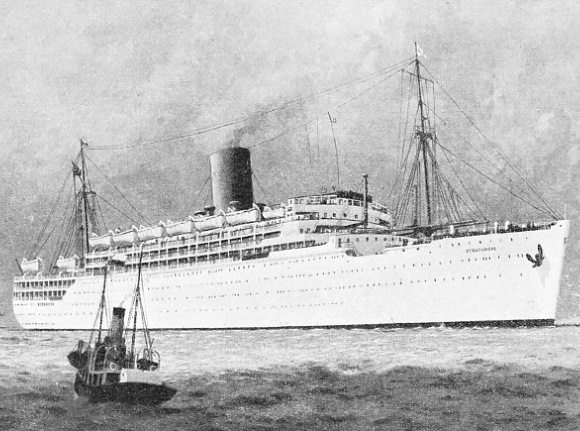 R.M.S. Strathmore
R.M.S. Strathmore
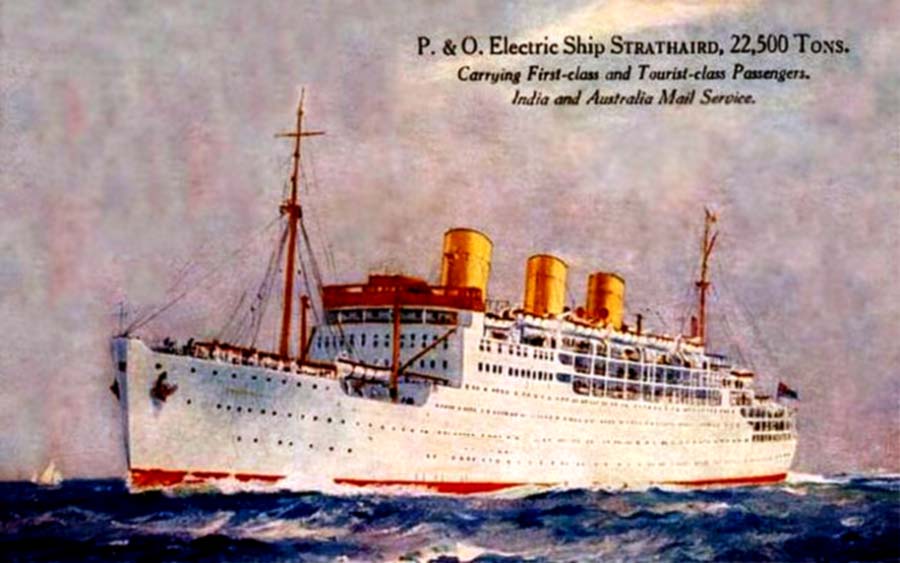 R.M.S. Strathaird
R.M.S. Strathaird
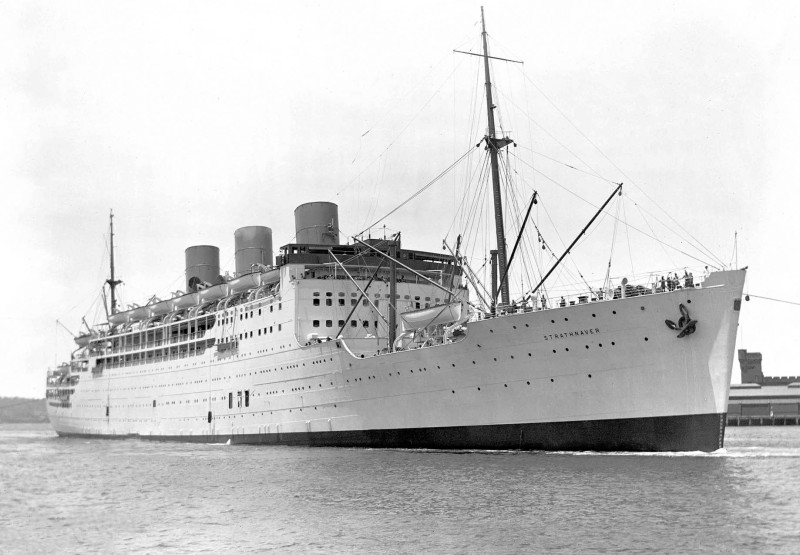 R.M.S. Strathnaver
R.M.S. Strathnaver
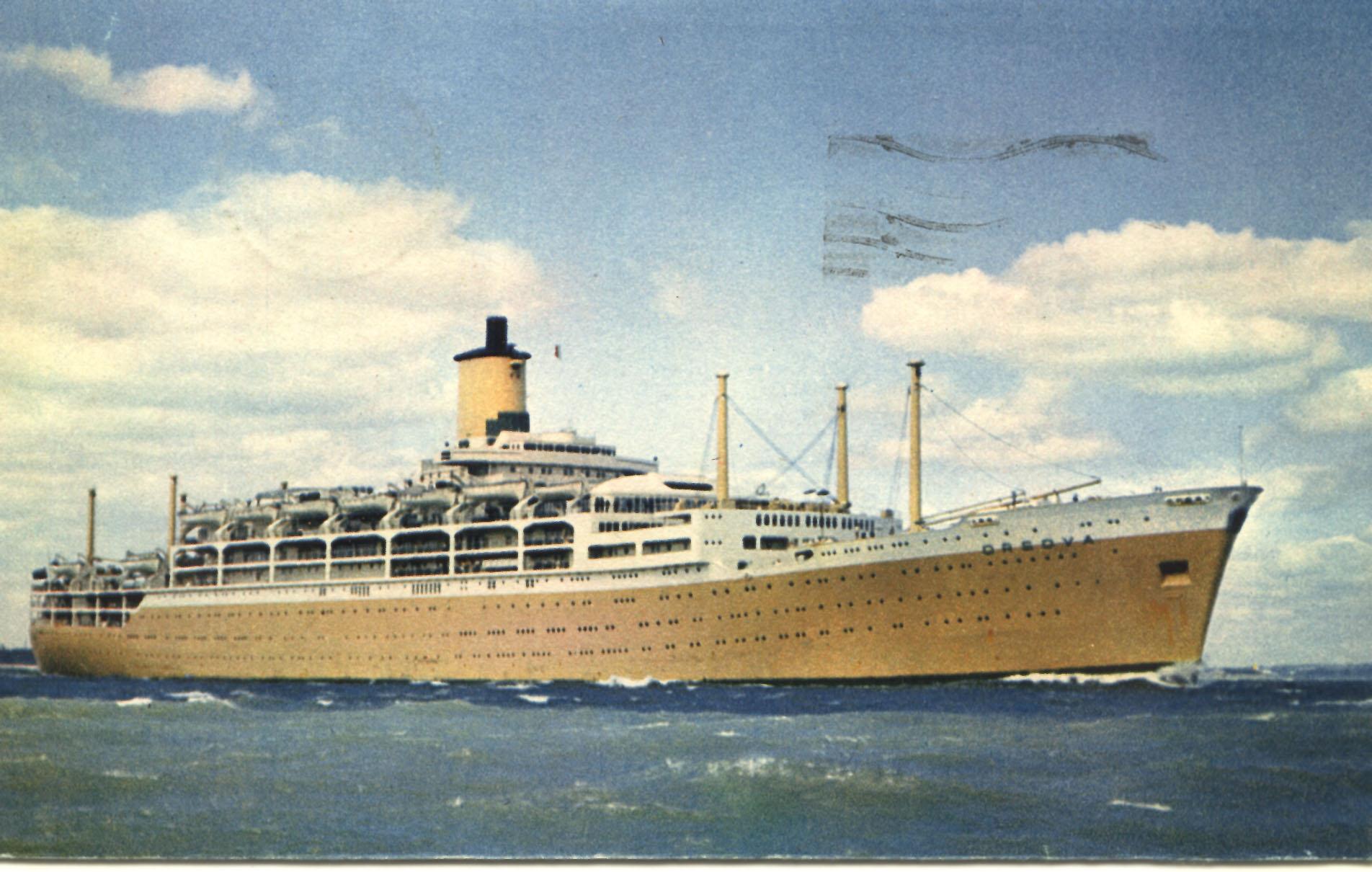 S.S. Orsova
S.S. Orsova
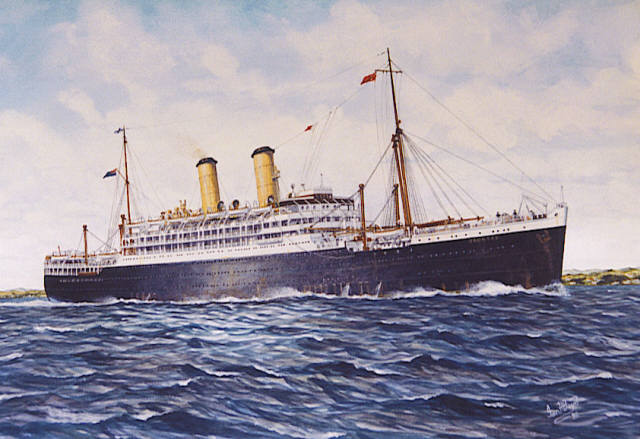 S.S. Orontes
S.S. Orontes
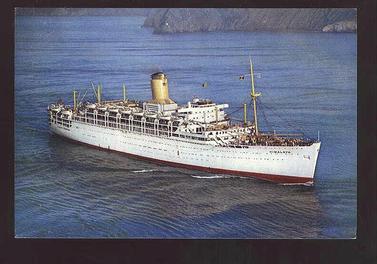
S.S. Himalaya
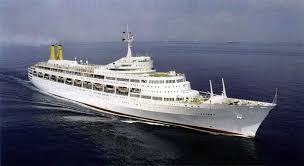 S.S. Canberra
S.S. Canberra
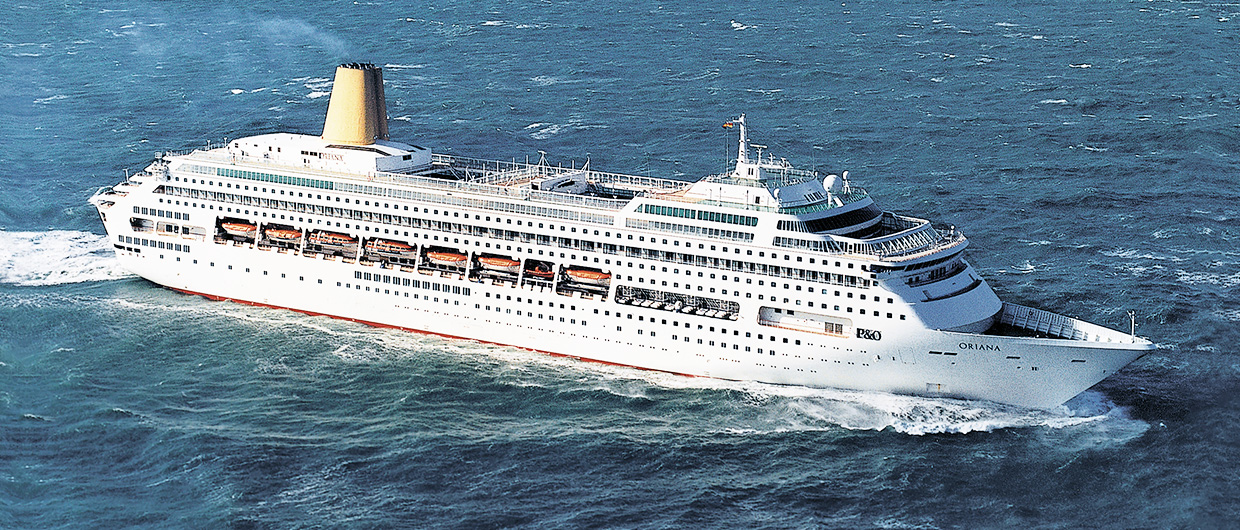 OrianaContenu
OrianaContenu
© 2017. Ma société. Tous droits réservés
